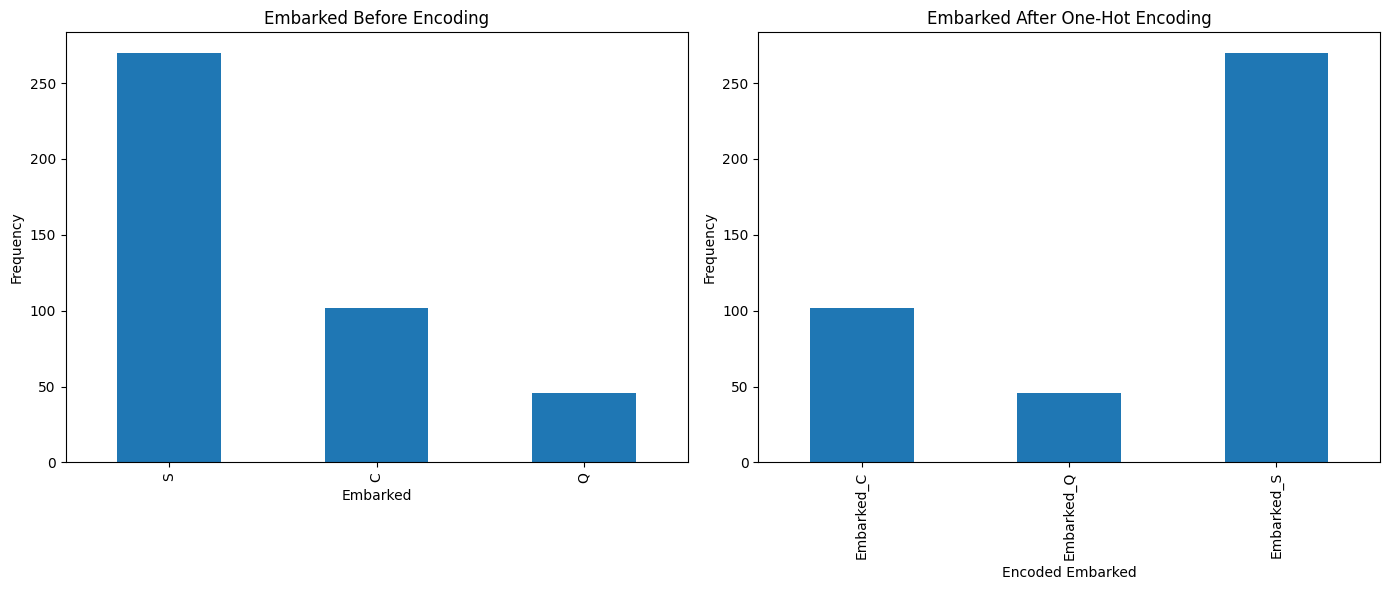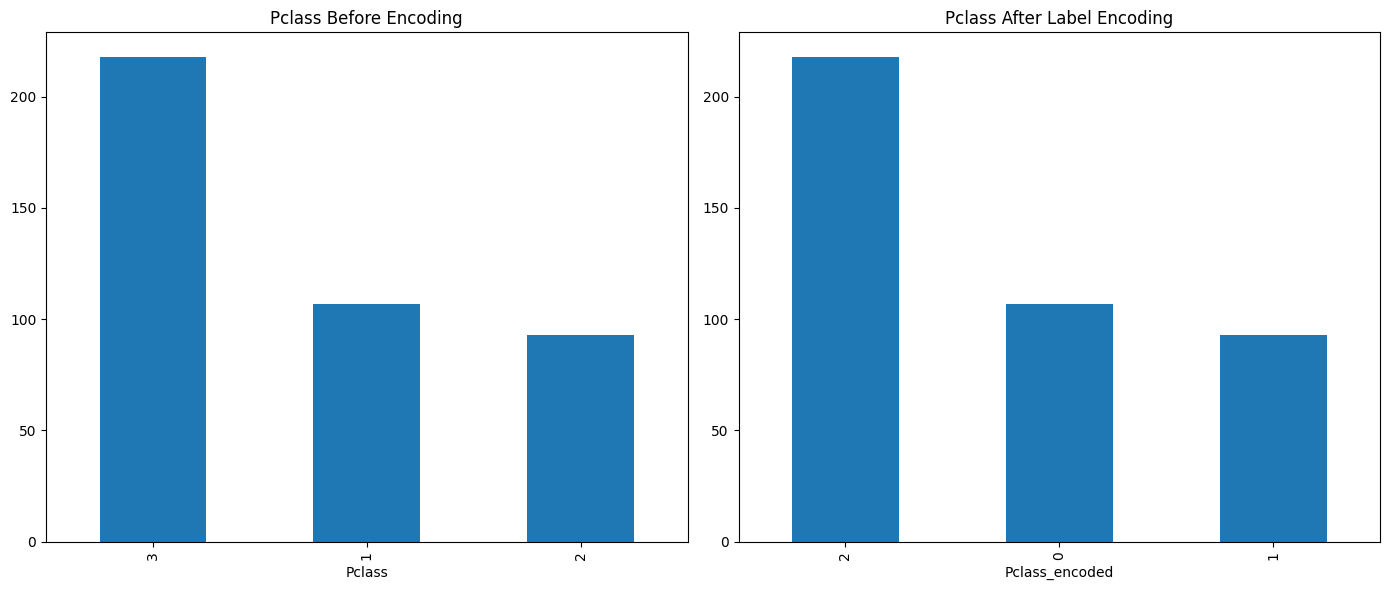Day 15: Encoding Categorical Data in Python - Expanded with Mathematical Implications#
Objective#
Deepen the understanding of encoding categorical data in Python by delving into the mathematical implications of each encoding technique, focusing on how they transform data and the influence this transformation has on analysis and model performance.
Prerequisites#
Intermediate Python, Pandas, NumPy, and Scikit-Learn skills.
Basic understanding of statistical concepts and data preprocessing.
Example Dataset: 100daysofml/100daysofml.github.io
Activity Dataset:100daysofml/100daysofml.github.io
Introduction to Types of Categorical Data#
Categorical data, essential in many datasets, can be classified primarily into two types:
Nominal Data (Unordered): Categories have no intrinsic order. E.g., Colors (Red, Blue), Gender (Male, Female).
Ordinal Data (Ordered): Categories have a logical order or ranking. E.g., Education level (High School, Bachelor’s, Master’s), Satisfaction rating (Unsatisfied, Neutral, Satisfied).
Cardinality, the number of unique categories in a feature, is crucial. High cardinality features can pose challenges for encoding due to increased dimensionality.
Implementing Encoding Techniques#
Loading the Dataset#
import pandas as pd
titanic_data = pd.read_csv('titanic.csv')
print(titanic_data.head())
Understanding the Data#
Identify nominal, ordinal, and cardinal features in the Titanic dataset:
Nominal: ‘Embarked’ (C = Cherbourg, Q = Queenstown, S = Southampton)
Ordinal: ‘Pclass’ (1 = 1st, 2 = 2nd, 3 = 3rd)
Cardinal: ‘Cabin’ (C85, C123, E46, …)
Mathematical Implications of Encoding Techniques#
Binary Encoding (for High Cardinality Features)#
Concept: Converts categories into binary code, resulting in fewer features compared to one-hot encoding.
Mathematical Rationale: Each binary digit represents a power of 2, efficiently encapsulating information even when the number of categories is large. This reduces the feature space dimensionality, preventing the “curse of dimensionality” in model training.
One-Hot Encoding (for Nominal Data)#
Concept: Creates a binary column for each category, with only one active state.
Formula: For a feature with
ncategories, it createsnbinary columns.Mathematical Rationale: Eliminates ordinal relationships between categories by treating each category as independent. However, it increases the feature space linearly with the number of categories, which can lead to sparse matrices and potentially overfitting in models.
Label Encoding (for Ordinal Data)#
Concept: Converts each category into a unique integer.
Mathematical Rationale: Preserves the ordinal nature of the data, ensuring that the model interprets the inherent order. However, it can be misleading if applied to nominal data, as it might introduce an artificial order that doesn’t exist.
Implementing Encoding Techniques with Mathematical Context#
Binary Encoding Example (High Cardinality Feature: ‘Cabin’)#
import category_encoders as ce
encoder = ce.BinaryEncoder(cols=['Cabin'])
titanic_binary_encoded = encoder.fit_transform(titanic_data['Cabin'])
print("Binary Encoding for 'Cabin':")
print(titanic_binary_encoded.head())
Mathematical Insight: Observe how each unique cabin is represented by a combination of binary digits, significantly reducing the feature space compared to one-hot encoding.
One-Hot Encoding Example (Nominal Data: ‘Embarked’)#
from sklearn.preprocessing import OneHotEncoder
encoder = OneHotEncoder()
titanic_one_hot_encoded = encoder.fit_transform(titanic_data[['Embarked']])
titanic_one_hot_encoded_df = pd.DataFrame(titanic_one_hot_encoded.toarray(), columns=encoder.get_feature_names_out(['Embarked']))
print("One-Hot Encoding for 'Embarked':")
print(titanic_one_hot_encoded_df.head())
Mathematical Insight: Each row has only one ‘1’ and the rest ‘0’s, ensuring that the categories are mutually exclusive and equally weighted.
Label Encoding Example (Ordinal Data: ‘Pclass’)#
from sklearn.preprocessing import LabelEncoder
encoder = LabelEncoder()
titanic_data['Pclass_encoded'] = encoder.fit_transform(titanic_data['Pclass'])
print("Label Encoding for 'Pclass':")
print(titanic_data[['Pclass', 'Pclass_encoded']].head())
Mathematical Insight: The encoding reflects the natural order of classes (1st > 2nd > 3rd), allowing models to interpret this hierarchy correctly.
Best Practices and Mathematical Considerations#
Avoid Data Leakage: Ensure that the encoding is fit only on the training set to avoid leakage of information from the test set.
Prevent Dummy Variable Trap: In one-hot encoding, drop one encoded column to avoid multicollinearity, a situation where variables are highly correlated.
Mind the Ordinality: Apply label encoding for ordinal data to preserve the order. Use one-hot or binary encoding for nominal data to avoid introducing fictitious ordinality.
Manage Cardinality: High cardinality in one-hot encoding can lead to a large number of features. Binary encoding can be a more efficient alternative in such cases.
Deep Dive into Visualization and Analysis Post-Data Encoding#
After encoding categorical data, visualize and analyze the transformed data to understand the impact of encoding on the dataset’s structure and the potential implications for model performance.
Visualization Techniques:
Histograms: Use histograms to visualize the frequency distribution of encoded features.
Bar Plots: Use bar plots to compare the frequency of categories before and after encoding.
Pair Plots: Use pair plots to visualize pairwise relationships between features.
Analytical Assessment:
Compare statistical summaries before and after encoding.
Observe changes in correlation between features.
Evaluate the impact of encoding on model performance using metrics like accuracy, precision, and recall.
In these statistical summaries, for the encoded data, you’ll be mostly looking at counts, means, and standard deviations for the binary variables created through the encoding process. The mean can give you a sense of the prevalence of each category in binary terms, and the standard deviation provides insights into the variance of these binary representations.
Remember, after encoding, the interpretability of the statistical summary changes. While means and standard deviations have clear interpretations for continuous data, their meaning is different for binary-encoded data. Here, the mean represents the proportion of 1s (or ‘presence’ of a feature), and the standard deviation represents the binary distribution’s spread.
Analyzing the visualizations and statistical summaries can give you insights into how encoding has transformed your data and what implications it may have for your analysis or model training.
Activity: Deep Dive with Titanic Dataset#
Objective#
Explore the nuances of encoding categorical data in Python, focusing on different techniques and their implications on data structure and model performance, using the Titanic dataset as an example.
Prerequisites#
Intermediate knowledge of Python, Pandas, NumPy, and Scikit-Learn.
Familiarity with data visualization libraries like Matplotlib and Seaborn.
Understanding of basic statistical concepts.
Dataset: 100daysofml/100daysofml_notebooks
Dataset Overview#
The Titanic dataset provides a mix of categorical and numerical features, making it ideal for demonstrating various encoding techniques. The dataset includes details of passengers such as Class, Sex, Age, and whether they survived the sinking.
Step 1: Load the necessary libraries#
# Import necessary libraries
import pandas as pd
import seaborn as sns
import matplotlib.pyplot as plt
from sklearn.preprocessing import OneHotEncoder, LabelEncoder
import category_encoders as ce
---------------------------------------------------------------------------
ModuleNotFoundError Traceback (most recent call last)
Cell In[1], line 6
4 import matplotlib.pyplot as plt
5 from sklearn.preprocessing import OneHotEncoder, LabelEncoder
----> 6 import category_encoders as ce
ModuleNotFoundError: No module named 'category_encoders'
Step 2: Load the Titanic dataset#
# Load the Titanic dataset
titanic_data = pd.read_csv('titanic.csv') # Replace with the correct path
print(titanic_data.head())
# Output:
# PassengerId Pclass Name Sex Age SibSp Parch Ticket Fare Cabin Embarked Survived
# 0 892 3 Kelly, Mr. James male 34.5 0 0 330911 7.8292 NaN Q 0
# 1 893 3 Wilkes, Mrs. James (Ellen Needs) female 47.0 1 0 363272 7.0000 NaN S 1
# ... (additional rows)`
PassengerId Pclass Name Sex \
0 892 3 Kelly, Mr. James male
1 893 3 Wilkes, Mrs. James (Ellen Needs) female
2 894 2 Myles, Mr. Thomas Francis male
3 895 3 Wirz, Mr. Albert male
4 896 3 Hirvonen, Mrs. Alexander (Helga E Lindqvist) female
Age SibSp Parch Ticket Fare Cabin Embarked Survived
0 34.5 0 0 330911 7.8292 NaN Q 0
1 47.0 1 0 363272 7.0000 NaN S 1
2 62.0 0 0 240276 9.6875 NaN Q 0
3 27.0 0 0 315154 8.6625 NaN S 0
4 22.0 1 1 3101298 12.2875 NaN S 1
Step 3: Categorical Data Identification#
Before encoding, it’s crucial to understand the types of categorical data present in the dataset.
# Identify the types of categorical data in the Titanic dataset
print("\nData types and unique values in each categorical column:")
for col in titanic_data.select_dtypes(include='object').columns:
print(f"{col}: {titanic_data[col].nunique()} unique values")
Data types and unique values in each categorical column:
Name: 418 unique values
Sex: 2 unique values
Ticket: 363 unique values
Cabin: 76 unique values
Embarked: 3 unique values
Step 4: Encoding Techniques and Visualization#
A. Binary Encoding for ‘Cabin’ (High Cardinality Feature)#
Binary encoding is efficient for high cardinality features as it significantly reduces the feature space compared to one-hot encoding.
# Binary Encoding for 'Cabin'
encoder = ce.BinaryEncoder(cols=['Cabin'])
titanic_binary_encoded = encoder.fit_transform(titanic_data['Cabin'])
print("\nBinary Encoding for 'Cabin':")
print(titanic_binary_encoded.head())
# Visualization for 'Cabin' before and after Binary Encoding
plt.figure(figsize=(14, 6))
plt.subplot(1, 2, 1)
titanic_data['Cabin'].value_counts().plot(kind='bar')
plt.title('Cabin Before Encoding')
plt.xlabel('Cabin')
plt.ylabel('Frequency')
plt.subplot(1, 2, 2)
titanic_binary_encoded.sum(axis=0).plot(kind='bar')
plt.title('Cabin After Binary Encoding')
plt.xlabel('Encoded Cabin')
plt.ylabel('Frequency')
plt.tight_layout()
plt.show()
---------------------------------------------------------------------------
NameError Traceback (most recent call last)
Cell In[4], line 2
1 # Binary Encoding for 'Cabin'
----> 2 encoder = ce.BinaryEncoder(cols=['Cabin'])
3 titanic_binary_encoded = encoder.fit_transform(titanic_data['Cabin'])
5 print("\nBinary Encoding for 'Cabin':")
NameError: name 'ce' is not defined
B. One-Hot Encoding for ‘Embarked’ (Nominal Data)#
One-hot encoding is perfect for nominal data without an intrinsic order as it prevents introducing any ordinal relationship.
# One-Hot Encoding for 'Embarked'
encoder = OneHotEncoder()
titanic_one_hot_encoded = encoder.fit_transform(titanic_data[['Embarked']])
titanic_one_hot_encoded_df = pd.DataFrame(titanic_one_hot_encoded.toarray(), columns=encoder.get_feature_names_out(['Embarked']))
print("\nOne-Hot Encoding for 'Embarked':")
print(titanic_one_hot_encoded_df.head())
# Visualization for 'Embarked' before and after One-Hot Encoding
plt.figure(figsize=(14, 6))
plt.subplot(1, 2, 1)
titanic_data['Embarked'].value_counts().plot(kind='bar')
plt.title('Embarked Before Encoding')
plt.xlabel('Embarked')
plt.ylabel('Frequency')
plt.subplot(1, 2, 2)
titanic_one_hot_encoded_df.sum(axis=0).plot(kind='bar')
plt.title('Embarked After One-Hot Encoding')
plt.xlabel('Encoded Embarked')
plt.ylabel('Frequency')
plt.tight_layout()
plt.show()
One-Hot Encoding for 'Embarked':
Embarked_C Embarked_Q Embarked_S
0 0.0 1.0 0.0
1 0.0 0.0 1.0
2 0.0 1.0 0.0
3 0.0 0.0 1.0
4 0.0 0.0 1.0

C. Label Encoding for ‘Pclass’ (Ordinal Data)#
Label encoding is suitable for ordinal data as it preserves the natural order within the categories.
# Label Encoding for 'Pclass'
encoder = LabelEncoder()
titanic_data['Pclass_encoded'] = encoder.fit_transform(titanic_data['Pclass'])
print("\nLabel Encoding for 'Pclass':")
print(titanic_data[['Pclass', 'Pclass_encoded']].head())
# Visualization for 'Pclass' before and after Label Encoding
plt.figure(figsize=(14, 6))
plt.subplot(1, 2, 1)
titanic_data['Pclass'].value_counts().plot(kind='bar')
plt.title('Pclass Before Encoding')
plt.subplot(1, 2, 2)
titanic_data['Pclass_encoded'].value_counts().plot(kind='bar')
plt.title('Pclass After Label Encoding')
plt.tight_layout()
plt.show()
Label Encoding for 'Pclass':
Pclass Pclass_encoded
0 3 2
1 3 2
2 2 1
3 3 2
4 3 2

Step 5: Statistical Summary Post-Encoding#
Assessing the impact of encoding techniques on the dataset’s structure and characteristics is crucial for understanding the transformation.
# Statistical Summary before and after encoding
print("\nStatistical Summary for 'Cabin' before encoding:")
print(titanic_data['Cabin'].describe())
Statistical Summary for 'Cabin' before encoding:
count 91
unique 76
top B57 B59 B63 B66
freq 3
Name: Cabin, dtype: object
print("\nStatistical Summary for 'Cabin' after Binary Encoding:")
print(titanic_binary_encoded.describe())
Statistical Summary for 'Cabin' after Binary Encoding:
---------------------------------------------------------------------------
NameError Traceback (most recent call last)
Cell In[8], line 2
1 print("\nStatistical Summary for 'Cabin' after Binary Encoding:")
----> 2 print(titanic_binary_encoded.describe())
NameError: name 'titanic_binary_encoded' is not defined
print("\nStatistical Summary for 'Embarked' before encoding:")
print(titanic_data['Embarked'].describe())
Statistical Summary for 'Embarked' before encoding:
count 418
unique 3
top S
freq 270
Name: Embarked, dtype: object
print("\nStatistical Summary for 'Embarked' after One-Hot Encoding:")
print(titanic_one_hot_encoded_df.describe())
Statistical Summary for 'Embarked' after One-Hot Encoding:
Embarked_C Embarked_Q Embarked_S
count 418.000000 418.000000 418.000000
mean 0.244019 0.110048 0.645933
std 0.430019 0.313324 0.478803
min 0.000000 0.000000 0.000000
25% 0.000000 0.000000 0.000000
50% 0.000000 0.000000 1.000000
75% 0.000000 0.000000 1.000000
max 1.000000 1.000000 1.000000
print("\nStatistical Summary for 'Pclass' before encoding:")
print(titanic_data['Pclass'].describe())
Statistical Summary for 'Pclass' before encoding:
count 418.000000
mean 2.265550
std 0.841838
min 1.000000
25% 1.000000
50% 3.000000
75% 3.000000
max 3.000000
Name: Pclass, dtype: float64
print("\nStatistical Summary for 'Pclass' after Label Encoding:")
print(titanic_data['Pclass_encoded'].describe())
Statistical Summary for 'Pclass' after Label Encoding:
count 418.000000
mean 1.265550
std 0.841838
min 0.000000
25% 0.000000
50% 2.000000
75% 2.000000
max 2.000000
Name: Pclass_encoded, dtype: float64
Analytical Assessment:
Compare statistical summaries before and after encoding.
Observe any changes in correlation between features.
Evaluate the impact of encoding on model performance using metrics like accuracy, precision, and recall.
Additional Resources (Encoding Categorical Data)#
https://medium.com/aiskunks/categorical-data-encoding-techniques-d6296697a40f
https://www.analyticsvidhya.com/blog/2020/08/types-of-categorical-data-encoding/
https://towardsdatascience.com/categorical-feature-encoding-547707acf4e5
https://machinelearningmastery.com/how-to-prepare-categorical-data-for-deep-learning-in-python/
https://towardsdatascience.com/all-about-categorical-variable-encoding-305f3361fd02


